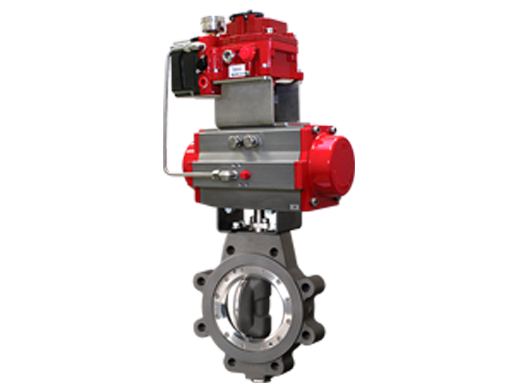How Control Valves Impact Power Efficiency in Industrial Settings
How Control Valves Impact Power Efficiency in Industrial Settings
Blog Article

Maximize Power Cost Savings and Comfort With Advanced Structure Automation Controls
In the realm of modern-day design and facility monitoring, the integration of innovative structure automation controls stands as a critical improvement. By utilizing the power of automation, buildings can adapt, react, and develop in ways that were as soon as unimaginable.
Energy Efficiency Perks
Energy effectiveness advantages can dramatically reduce power intake and functional expenses in buildings. Energy-efficient systems, such as innovative building automation controls, can enhance the usage of resources like lights, home heating, and air conditioning, leading to lower power expenses over time.
Additionally, improved energy performance can extend the life expectancy of building tools and systems. By operating more efficiently, cooling and heating systems, lighting fixture, and other building components experience much less deterioration, causing minimized upkeep and substitute costs. Additionally, energy-efficient buildings typically command greater property values and rental prices, supplying long-term monetary advantages to owners.
Moreover, power effectiveness can enhance resident convenience and performance. Effectively regulated interior environments with optimal illumination and thermal conditions produce an even more helpful and pleasant work area, bring about boosted worker fulfillment and efficiency. In general, the energy effectiveness advantages related to sophisticated structure automation controls are multifaceted, including cost savings, ecological stewardship, and passenger wellness.
Boosted Comfort Control
Enhancing convenience control in structure settings needs a sophisticated combination of advanced automation systems for ideal occupant well-being. By making use of advanced structure automation controls, centers can customize the interior atmosphere to fulfill the specific demands and preferences of owners. control valves.
By including these sophisticated controls, buildings can not just boost convenience but likewise enhance power performance by optimizing system operations based on actual occupancy and use patterns. Eventually, focusing on occupant comfort through innovative automation systems leads to an extra pleasurable and much healthier interior atmosphere.
Functional Effectiveness Improvements

In addition, the application of real-time surveillance and analytics devices makes it possible for structure operators to determine power ineffectiveness and functional anomalies quickly. By continually keeping an eye on energy use patterns and system efficiency metrics, modifications can be made in real-time to optimize power intake and make certain peak operational performance. control valves. Additionally, integrating need feedback methods into building automation controls can better boost operational effectiveness by dynamically readjusting energy use based upon grid problems and prices signals
Indoor Climate Optimization
Efficient indoor environment optimization is an essential facet of building automation controls, guaranteeing passengers' comfort and health while making best use of power financial savings. By making use of sophisticated sensors and controls, constructing automation systems can continuously adjust and monitor temperature level, humidity levels, air redirected here quality, and ventilation to create an optimal indoor environment. Maintaining comfy and constant their explanation problems not only boosts occupant fulfillment but likewise enhances efficiency and general well-being.
Indoor environment optimization likewise plays a vital function in energy effectiveness. By fine-tuning home heating, air conditioning, and air flow systems based upon real-time information and occupancy patterns, developing automation controls can dramatically decrease energy usage - control valves. Carrying out methods such as demand-controlled ventilation and thermal zoning can assist minimize energy waste while guaranteeing that each area of the building receives the needed conditioning.

Lasting Setting Development
Structure automation controls not only enhance indoor climate conditions for energy performance and passenger comfort but also lay the foundation for developing a sustainable atmosphere with calculated management of systems and resources. By integrating sophisticated building automation innovations, such as sensing units, actuators, and intelligent software program, facilities can adjust and Full Report keep an eye on energy use in real-time to decrease waste and lower their carbon impact. These systems make it possible for predictive upkeep, determining potential problems prior to they intensify and enhancing devices performance to boost durability and performance.
Furthermore, sustainable environment creation expands past energy management to include water preservation, waste decrease, and indoor air top quality enhancement. Building automation controls can control water use, find leakages, and make sure proper waste disposal methods, adding to general sustainability efforts. Furthermore, by managing and keeping track of air flow and filtration systems, these technologies boost occupant health and productivity while reducing power consumption related to heating and cooling procedures.
Verdict
Finally, advanced structure automation manages deal significant benefits in regards to power savings, convenience control, operational performance, indoor environment optimization, and creating a lasting setting. By applying these controls, buildings can achieve ideal efficiency while lowering power intake and enhancing occupant comfort. It is noticeable that making use of advanced automation technology is critical in improving structure performance and developing an extra sustainable future.
Energy performance benefits can dramatically reduce energy consumption and functional expenses in buildings. Generally, the power performance advantages associated with sophisticated structure automation controls are complex, incorporating price savings, environmental stewardship, and occupant wellness.
Furthermore, incorporating demand feedback strategies right into building automation controls can even more improve functional effectiveness by dynamically adjusting power use based on grid conditions and pricing signals.
Structure automation controls not just maximize indoor climate problems for power effectiveness and passenger convenience yet additionally lay the structure for developing a lasting setting through critical administration of sources and systems.In verdict, advanced building automation manages deal considerable benefits in terms of power savings, comfort control, operational efficiency, interior climate optimization, and developing a sustainable atmosphere.
Report this page